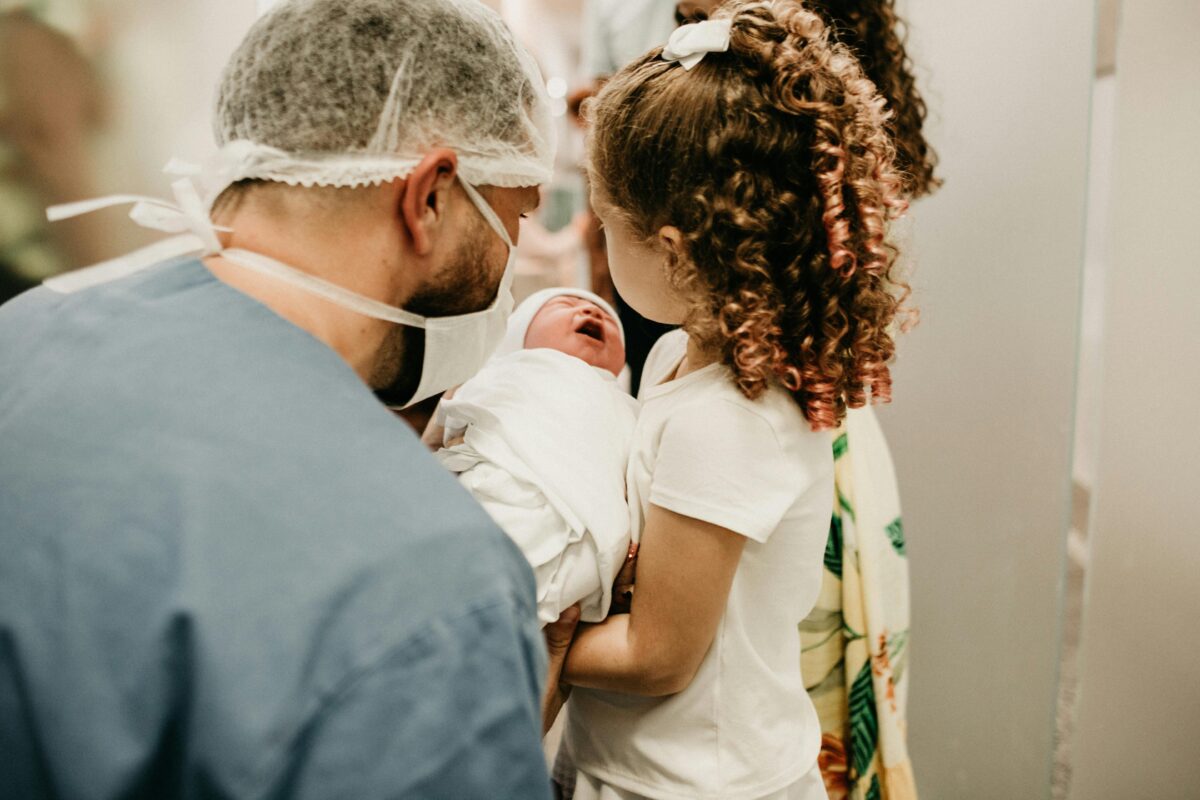Neonatal Sepsis – Causes and Management
“How dangerous is neonatal sepsis?”
Neonatal sepsis is a severe infection that spreads through the bloodstream
shortly after birth, requiring immediate medical treatment.
Today, we will explore the causes, symptoms, treatment, and prevention of neonatal sepsis.
📌 Introduction
Neonatal sepsis occurs when bacteria, viruses, or fungi enter the bloodstream,
causing a severe immune response that spreads throughout the body.
Since a newborn’s immune system is underdeveloped, sepsis can become life-threatening within hours.
✅ Early detection and rapid treatment are crucial,
✅ Without prompt intervention, complications like septic shock and multi-organ failure may occur.
💡 This article provides an in-depth look at neonatal sepsis, including its causes, symptoms, treatment, and prevention.
Causes and Types of Neonatal Sepsis
Neonatal sepsis is a severe bloodstream infection that can spread rapidly.
It is classified into two types based on the time of onset and mode of infection.

1️⃣ Early-Onset Neonatal Sepsis (EOS)
✔ Occurs within the first 72 hours of life
✔ Most commonly caused by bacteria transmitted during childbirth
✔ Increased risk in preterm infants, low birth weight babies, and premature rupture of membranes
🔹 Common Causative Pathogens
– Group B Streptococcus (GBS) → Most frequent cause of early-onset sepsis
– Escherichia coli (E. coli) → High infection rate in preterm infants
– Listeria monocytogenes → Can be acquired through contaminated food during pregnancy
🔹 Modes of Infection
– Placental Transmission: Infection passes from mother to baby via the placenta
– Rupture of Membranes: Increased risk if the amniotic sac breaks early
– Birth Canal Exposure: Bacteria from the birth canal enter the baby’s bloodstream
⚠ EOS progresses rapidly, making immediate diagnosis and treatment critical.
2️⃣ Late-Onset Neonatal Sepsis (LOS)
✔ Occurs after the first 4 days of life, up to several weeks
✔ Can be acquired in the hospital (nosocomial) or at home
✔ Higher risk in preterm infants or babies previously admitted to the NICU
🔹 Common Causative Pathogens
– Staphylococcus aureus → A major cause of hospital-acquired infections
– Enterobacteriaceae → Can spread through contaminated medical equipment or hands
– Candida species → Fungal infections more common in immunocompromised infants
🔹 Modes of Infection
– Hospital-Acquired Infections: Contaminated catheters, ventilators, or IV lines
– Direct Contact Transmission: Spread through healthcare workers or caregivers
– Breastfeeding Transmission: Infection can occur if breast milk or breast pump is contaminated
⚠ LOS often occurs due to poor hygiene or medical equipment contamination,
making strict infection control measures essential.
💡 Summary of Neonatal Sepsis Types
✔ Early-Onset Sepsis (EOS) → Occurs within 72 hours, caused by birth-related infections
✔ Late-Onset Sepsis (LOS) → Occurs after 4 days, often linked to hospital or environmental exposure
Neonatal sepsis can progress rapidly,
so early identification and preventive measures are crucial!

Symptoms and Diagnosis of Neonatal Sepsis
Neonatal sepsis can be challenging to detect early,
as initial symptoms may be subtle.
However, if left untreated, it can rapidly progress to a life-threatening condition.
1️⃣ Common Symptoms of Neonatal Sepsis
✔ General Warning Signs
– Fever (above 38°C) or hypothermia (below 36°C)
– Lethargy, excessive sleepiness, or poor responsiveness
– Decreased feeding, difficulty sucking or swallowing
✔ Respiratory Symptoms
– Rapid breathing (over 60 breaths per minute) or irregular breathing
– Cyanosis (bluish discoloration of lips, hands, or feet)
– In severe cases, episodes of apnea (breathing stops temporarily)
✔ Circulatory & Blood Flow Abnormalities
– Pale or mottled skin
– Weak pulse, low blood pressure
– Cold hands and feet, poor circulation
✔ Gastrointestinal Symptoms
– Vomiting or persistent abdominal bloating
– Unusual stool color (green, black, or pale)
– Diarrhea or constipation
⚠ If sepsis progresses to septic shock, it can lead to multiple organ failure,
posing a life-threatening risk to the newborn.
2️⃣ Diagnostic Methods for Neonatal Sepsis
✔ Blood Tests (CBC, CRP, Blood Culture)
– Abnormal white blood cell count → Indicates infection
– Elevated C-reactive protein (CRP) → Confirms inflammatory response
– Blood culture → Detects bacteria in the bloodstream
✔ Urine & Cerebrospinal Fluid (CSF) Tests
– Urine culture → Checks for urinary tract infections
– Lumbar puncture (spinal tap) → Detects meningitis-related infections
✔ Imaging Tests (Chest X-ray, Ultrasound, etc.)
– Assesses for pneumonia or abdominal infections related to sepsis
💡 Summary of Neonatal Sepsis Symptoms & Diagnosis
✔ Watch for early signs like fever, lethargy, and respiratory distress
✔ Blood tests, urine analysis, and CSF tests are essential for diagnosis
✔ Sepsis can rapidly lead to multiple organ failure, requiring urgent medical care
Neonatal sepsis is a medical emergency,
so immediate hospital evaluation is necessary if any symptoms arise!

Treatment and Management of Neonatal Sepsis
Neonatal sepsis requires immediate medical intervention.
Prompt diagnosis and rapid treatment are crucial for survival.
1️⃣ Main Treatment Methods for Neonatal Sepsis
✔ Broad-Spectrum Antibiotic Therapy
– Antibiotics are administered immediately, even before test results confirm infection
– Common first-line antibiotics: Ampicillin + Gentamicin or Cefotaxime
– Once the pathogen is identified, antibiotic therapy is adjusted accordingly
✔ Intravenous Fluids & Electrolyte Management
– Sepsis can cause dehydration and electrolyte imbalance, requiring IV fluids
– In cases of septic shock, fluid resuscitation and blood pressure stabilization are necessary
✔ Oxygen & Circulatory Support
– Oxygen therapy or mechanical ventilation may be needed for respiratory distress
– Vasopressors (blood pressure-stabilizing medications) are given if hypotension develops
✔ Septic Shock Management
– In severe cases, aggressive fluid resuscitation and medications are used to stabilize circulation
– Additional treatments may include dialysis or corticosteroid therapy
2️⃣ Hospitalization & Monitoring
✔ Continuous Monitoring in the NICU
– Newborns with sepsis are admitted to the Neonatal Intensive Care Unit (NICU)
– Vital signs (blood pressure, oxygen levels, blood sugar) are closely monitored
✔ Antibiotic Therapy Duration
– Standard treatment duration: 7–10 days of IV antibiotics
– In severe cases (e.g., meningitis), 2–3 weeks of antibiotic therapy may be required
✔ Eliminating Infection Sources
– If sepsis is related to pneumonia, urinary tract infections, or meningitis, targeted treatment is provided
– Contaminated medical devices (catheters, ventilators) are removed if needed
3️⃣ Post-Treatment Recovery & Care
✔ Nutritional Support for Immune Recovery
– After treatment, newborns need adequate nutrition to restore immunity
– Breastfeeding is encouraged, as it provides antibodies for immune support
✔ Strict Infection Prevention at Home
– Parents and caregivers must practice proper hand hygiene
– Avoid crowded places after hospital discharge to reduce infection risk
✔ Regular Health Check-Ups
– Follow-up pediatric check-ups are essential for monitoring recovery
– Adhere to vaccination schedules to strengthen immunity
💡 Summary of Neonatal Sepsis Treatment & Management
✔ Immediate antibiotic treatment → Broad-spectrum antibiotics before lab results
✔ Fluid therapy & oxygen support → Prevent dehydration and stabilize respiration
✔ NICU intensive care → Continuous monitoring of vital signs
✔ Post-recovery immune support → Proper nutrition, hygiene, and follow-up medical care
Neonatal sepsis can be life-threatening if treatment is delayed.
Early diagnosis and rapid medical intervention are critical for survival.

Prevention and Conclusion for Neonatal Sepsis
Neonatal sepsis requires early diagnosis and treatment,
but the best strategy is preventing infection before it occurs.
By following proper prenatal and newborn care guidelines,
the risk of neonatal sepsis can be significantly reduced.
1️⃣ How to Prevent Neonatal Sepsis
✔ Preventing Maternal Infections During Pregnancy
– Group B Streptococcus (GBS) screening during pregnancy; if positive, antibiotics should be administered before delivery
– Ensure vaccinations for rubella, hepatitis B, and influenza
– Avoid high-risk foods such as raw seafood, undercooked meat, and unpasteurized dairy to prevent listeria infections
✔ Reducing Infection Risks During Birth
– Immediate medical attention if premature rupture of membranes (PROM) occurs
– Maintaining a sterile delivery environment to prevent bacterial transmission
✔ Strict Infection Control for Newborns
– Frequent handwashing before handling the baby
– Limit newborn exposure to crowded places and sick individuals
– Avoid visitors with flu, colds, or other infections
✔ Encouraging Breastfeeding
– Breast milk contains antibodies that help strengthen the baby’s immune system
– However, proper breast hygiene and sterilized breast pumps are necessary to prevent contamination
✔ Following the Vaccination Schedule
– Essential vaccines such as hepatitis B, pneumococcal, rotavirus, and influenza help prevent infections that can lead to sepsis
2️⃣ When to Seek Immediate Medical Attention
✅ Fever (above 38°C) or hypothermia (below 36°C)
✅ Lethargy, difficulty waking, or poor feeding
✅ Rapid or irregular breathing, cyanosis (blue discoloration of lips, hands, or feet)
✅ Pale, mottled skin, cold extremities, or weak circulation
✅ Vomiting, abdominal bloating, or abnormal stool color (green, black, or pale stools)
⚠ If any of these symptoms occur, immediate hospitalization is necessary,
as early antibiotic treatment is crucial to preventing severe complications.
🔥 Conclusion & Key Takeaways
Neonatal sepsis is a serious but preventable infection.
With proper prenatal care, hygiene, and early medical intervention,
sepsis-related complications can be minimized.
🎯 Essential Guide to Preventing and Managing Neonatal Sepsis
✔ Prenatal infection screening → GBS testing & routine pregnancy check-ups
✔ Safe delivery practices → Infection control measures during labor
✔ Strict newborn hygiene → Handwashing, avoiding sick individuals, and minimizing exposure
✔ Breastfeeding & vaccinations → Strengthen newborn immunity
✔ Immediate medical attention for symptoms → Early treatment saves lives
💡 Prevention is the most effective way to protect newborns from sepsis.
Parents and caregivers must prioritize hygiene, immune support, and early medical care
to ensure the baby’s health and safety! 😊




